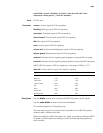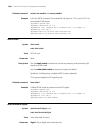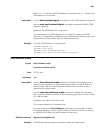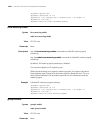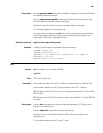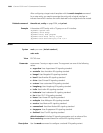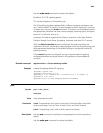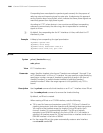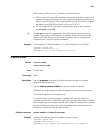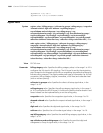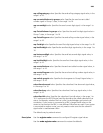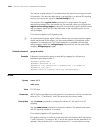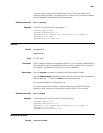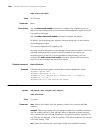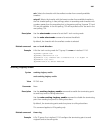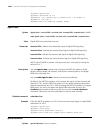
2661
When creating a PRI set on a T1 interface, note the following:
■ TS24 is used as D channel for signaling transmission, and other timeslots as B
channels for data transmission. You may randomly bind these timeslots into a
PRI set (as the D channel, TS24 is automatically bound). This PRI set is logically
equivalent to an ISDN PRI interface in the form of 23B + D.
■ For the created PRI set, the system automatically creates a serial interface
named serial number:23.
n
The pri-set command is independent of the DSP resource (voice processing
module- VPM). When no DSP resource is available, though IP calls cannot be
placed, local TDM calls can still be placed. Therefore, you can configure this
command even if no DSP resource is available.
Example # On interface E1 1/0 bind timeslots 1, 2, and 8 through 12 into a PRI set.
<Sysname> system-view
[Sysname] controller e1 1/0
[Sysname-e1 1/0] pri-set timeslot-list 1,2,8-12
re-answer enable
Syntax re-answer enable
undo re-answer enable
View R2 CAS view
Parameter None
Description Use the
re-answer command to enable the originating point to support
re-answer signal processing.
Use the
undo re-answer enable command to restore the default.
By default, the originating point does not support re-answer signal processing.
This command applies to R2 signaling only.
In some countries, re-answer process is needed in R2 signaling. When the
terminating point sends a clear-back signal, the originating point does not release
the line right away, but maintains the call state instead. If it receives the re-answer
signal from the terminating point within a specified time, it continues the call;
otherwise, it disconnects the call upon timeout.
Related command: answer enable and timer dl re-answer.
Example # Enable the originating point to process re-answer signals.
<Sysname> system-view
[Sysname] controller e1 1/0
[Sysname-e1 1/0] timeslot-set 0 timeslot-list 1-31 signal r2



